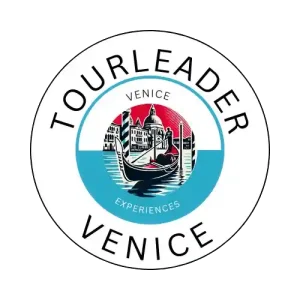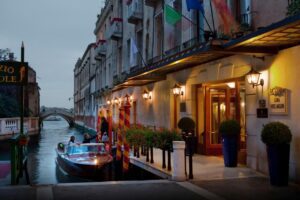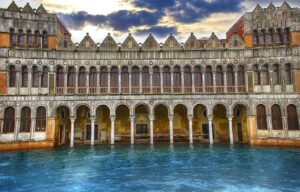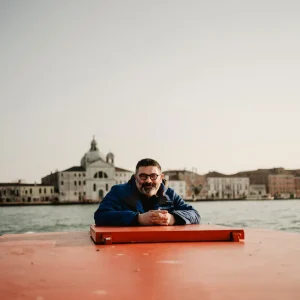What to Do in Venice — The Ultimate Local Guide by Tour Leader Venice
What to Do in Venice — The Ultimate Local Guide
Venice isn’t just a destination — it’s an emotion. A floating city built on water and imagination, where every canal, bridge, and hidden courtyard has a story to tell. Whether you’re here for a single unforgettable day or a full week of exploration, this insider guide from Tour Leader Venice will show you the best things to see, taste, and experience — the way locals do.
🚤 The Best Things to Do in Venice
Let’s start with the essentials — the experiences that define Venice. But remember, this city rewards those who wander. For every famous sight, there’s a quiet backstreet or secret doorway waiting to surprise you.
1. Take a Gondola Ride — Venice’s Timeless Tradition
It’s cliché, yes — but some clichés are worth living. A gondola ride through Venice’s canals is pure poetry in motion. Glide beneath centuries-old bridges, past crumbling palazzi and candlelit windows. If you want the true Venetian experience, skip the crowded tourist docks and book a private gondola ride through quieter canals at sunset. The reflections, the silence, the soft splash of oars — it’s unforgettable.
Local tip: Ask your gondolier to steer through back canals instead of the Grand Canal. It’s calmer, more intimate, and feels like stepping into a 17th-century painting.
2. Visit St. Mark’s Basilica — The Golden Heart of Venice
No trip to Venice is complete without stepping inside St. Mark’s Basilica. Covered in over 8,000 square meters of shimmering mosaics, it’s a vision of Byzantine splendor. The church’s treasures reflect the city’s ancient connection to the East, when Venetian merchants traded with Constantinople and beyond.
Book skip-the-line tickets to avoid the queues or join our private Basilica & Doge’s Palace tour for a deeper look at the art, architecture, and hidden corners most visitors miss.
Local tip: Visit early morning or late afternoon when sunlight hits the mosaics — the golden glow is otherworldly.
3. Explore the Doge’s Palace — Power, Intrigue, and Beauty
Right next to the Basilica, the Doge’s Palace (Palazzo Ducale) once housed the rulers of the Venetian Republic. Its pink marble façade hides a labyrinth of chambers, council halls, and frescoes by Tintoretto and Veronese. Walk across the Bridge of Sighs — named for the prisoners’ final sigh before facing the dark cells of the Venetian prison.
To make the most of your visit, take a guided Doge’s Palace tour and hear the political gossip, betrayals, and scandals that once shaped Europe’s most mysterious republic.
4. Discover the Peggy Guggenheim Collection
Modern art meets Venetian charm at the Peggy Guggenheim Collection. This intimate museum — Peggy’s former home — overlooks the Grand Canal and features masterpieces by Picasso, Dalí, Pollock, and Calder. Her sculpture garden is a peaceful retreat amid the city’s energy.
Local tip: Combine your visit with a stroll through Dorsoduro, Venice’s artistic district. Stop for gelato at Nico’s by the Zattere waterfront and watch the boats go by.
5. Wander Through the Jewish Ghetto — Venice’s Soulful Side
Founded in 1516, Venice’s Jewish Ghetto is the oldest in the world — and still one of its most moving neighborhoods. Quiet courtyards, centuries-old synagogues, and family-run bakeries tell a story of resilience and culture. Join our Off-the-Beaten-Path Tour to explore this lesser-known corner and hear stories that rarely make it into guidebooks.
6. Cross the Rialto Bridge — Venice’s Beating Heart
The Rialto Bridge is one of Venice’s most recognizable icons. But beyond the photo ops, it’s also home to the Rialto Market, where locals have bought seafood and produce for centuries. Go early in the morning for the smell of salt and citrus, and watch Venetians haggle over cuttlefish and clams.
Local tip: Have lunch nearby at a traditional bacaro and order sarde in saor (sweet-and-sour sardines) with a glass of crisp Prosecco.
7. Climb the Campanile di San Marco — Venice from the Sky
Standing nearly 100 meters tall, St. Mark’s Campanile offers the best view in Venice. The elevator ride brings you straight to the top — no stairs required — where you can see the red rooftops, turquoise lagoon, and distant Dolomites on clear days.
Don’t miss the bells: they still ring out the same way they did centuries ago, echoing across the canals like a heartbeat.
8. Explore Murano, Burano & Torcello — Venice Beyond Venice
Each island in the lagoon has its own magic. Murano glows with glassblowing studios where artisans shape molten fire into beauty — join our Murano Glass Workshop Tour for a hands-on experience. Burano dazzles with candy-colored houses and lace artisans who’ve passed their craft down for generations. Torcello, the oldest island, feels frozen in time — a peaceful escape filled with wild gardens and ancient mosaics.
Local tip: Visit early morning or late afternoon when day-trippers have gone, and the islands return to their calm rhythm.
🕰️ How Many Days Do You Need in Venice?
To experience Venice properly, give yourself time to breathe it in. Three to four days is ideal — enough to see the highlights, explore hidden corners, and enjoy the lagoon’s rhythm without rushing.
- 1 Day: Focus on St. Mark’s Square, the Doge’s Palace, a gondola ride, and a walk over Rialto Bridge.
- 2 Days: Add the Jewish Ghetto, the Cicchetti & Wine Tour, and a sunset cruise on the lagoon.
- 3–4 Days: Visit the islands, art museums, and quiet sestieri like Dorsoduro or Castello. You’ll see why locals never get tired of this city.
Local tip: Don’t plan every minute. Venice rewards spontaneity — a turn down the wrong alley often leads to the best view or friendliest café.
🌸 The Best Time to Visit Venice
Venice changes with the seasons — each has its own magic.
- Spring (April–June): Mild weather, blooming wisteria, and fewer crowds. Perfect for walking tours and photography.
- Summer (July–August): Hot but festive — long evenings, open-air concerts, and the Festa del Redentore fireworks over the lagoon. Stay cool with gelato and a breeze from the Lido beaches.
- Autumn (September–November): Golden sunsets, quieter canals, and the Venice Film Festival. A favorite time for locals.
- Winter (December–March): Mysterious, misty, and romantic — fewer tourists, cozy cafés, and the magic of Carnival in February.
Local tip: Always pack waterproof shoes in fall and winter — high tide (“acqua alta”) can make the streets glisten unexpectedly.
🚶 How to Get Around Venice
Venice has no cars, no horns, and no chaos — just boats and footsteps. Getting around here is part of the experience.
- Walk: The best way to discover Venice is simply to wander. Don’t worry about getting lost — you’ll always find water eventually.
- Vaporetto (Waterbus): The city’s floating metro. Get a Vaporetto Pass for unlimited rides — it’s the easiest way to explore the Grand Canal and nearby islands.
- Water Taxi: Sleek, private, and fast — ideal for airport transfers or romantic arrivals. Try our private transfer service.
- Gondola: For the ultimate slow travel experience. Early morning and twilight are best.
Local tip: Always wear comfortable shoes — bridges and cobblestones can be tricky after a few spritzes!
🏛️ Top Landmarks & Hidden Gems
Venice is full of landmarks everyone knows — and a few that locals keep secret:
- Accademia Gallery: Renaissance masterpieces in a serene setting.
- Scuola Grande di San Rocco: Tintoretto’s dramatic ceiling frescoes — breathtaking and underrated.
- Scala Contarini del Bovolo: A hidden spiral staircase offering a stunning skyline view (tickets here).
- Ca’ Rezzonico: A museum dedicated to 18th-century Venice, filled with chandeliers and secrets.
- Teatro La Fenice: Venice’s legendary opera house — reborn from fire and full of passion.
Local tip: Visit a few minor churches — Venice has over 140 of them, many hiding priceless art and quiet beauty.
🍝 Where to Eat in Venice
Venetian cuisine is comfort food with history — born from the sea, spiced by trade, and always made with love.
- Osteria al Mascaron: Rustic, loud, and delicious — order the cuttlefish in ink.
- Alla Vedova: Home of Venice’s most famous polpette (meatballs).
- Osteria Bancogiro: Chic dining overlooking the Grand Canal.
- Trattoria alla Rivetta: A lively spot loved by locals and gondoliers alike.
- Osteria Anice Stellato: Refined flavors in a quiet Cannaregio setting.
Or better yet — come eat with us. Join our Cicchetti & Wine Tour to discover the best bacari (Venetian wine bars) and learn to eat like a true Venetian — standing, chatting, and laughing with a glass of local wine in hand.
🎭 Famous Events in Venice
Venice celebrates life in style — from masked balls to fireworks over the lagoon. Plan your visit around one of these spectacular events:
- Carnival of Venice (February): The city transforms into a Renaissance dream. Costumes, music, mystery — and magic in every square.
- Venice International Film Festival (September): Hollywood glamour meets lagoon elegance on Lido Island.
- Regata Storica (September): Colorful gondolas race along the Grand Canal — a centuries-old tradition still cheered by locals.
- Festa del Redentore (July): Fireworks, floating bridges, and Venetians dining on their boats — pure summer joy.
- Biennale di Venezia (every two years): One of the world’s greatest art exhibitions — spread across the Arsenale and Giardini.
🏨 Where to Stay in Venice
Each Venetian neighborhood (called a sestiere) has its own personality. Here’s how to choose your home base:
- San Marco: Glamorous, central, and close to all major landmarks. Ideal for first-timers.
- Cannaregio: Authentic and laid-back — where real Venetians live. Great for food lovers.
- Dorsoduro: Artistic and romantic, perfect for couples. Home to the Peggy Guggenheim Collection.
- Castello: Peaceful and historic, filled with gardens, artisans, and local life.
- Santa Croce: Convenient for arrivals, close to train and bus connections.
Local tip: Book early for spring and autumn. And don’t overlook small boutique hotels — they often occupy restored palaces with canal views.
🕍 A Brief History of Venice
Venice was born out of necessity — a refuge from chaos. In the 5th century, families fleeing invasions built wooden platforms in the lagoon. Against all odds, the city thrived — turning saltwater and sandbars into the heart of a global empire.
By the Renaissance, Venice was the richest city in the world — trading silk, spices, and stories. It gave the world explorers like Marco Polo and artists like Titian and Tintoretto. When Napoleon arrived in 1797, the Republic fell, but the spirit never did.
Today, Venice remains an improbable miracle — fragile, beautiful, eternal. And with Tour Leader Venice, you can explore that living history in person — from the Doge’s secrets to the hidden artisans who still craft beauty by hand.
💡 Final Thoughts
Venice is not a city you “do” — it’s a city you *feel*. Walk slowly, look up, listen to the bells, taste the wine, talk to the locals. Let the rhythm of the lagoon guide you. Because once you let go of schedules and surrender to her pace, Venice reveals her true self — and she’ll stay with you forever.
🌊 Book Your Private Venice Tour
FAQs About What to Do in Venice
Which local experiences show the authentic side of Venice?
Skip the crowds and meet the artisans who keep old traditions alive — from Murano glassblowers to mask-makers and textile artists. You can even take part in a Create Your Own Venetian Mask Workshop or learn to row a traditional boat on our Venetian Rowing Experience. These are the hands-on moments you’ll remember long after the trip.
What are the top things to do in Venice for first-time visitors?
Start with the icons — St. Mark’s Basilica, the Doge’s Palace, and a gondola ride through the quiet canals. Then go beyond the postcard: explore artisan studios, local markets, and lesser-known islands such as Burano and Torcello. To experience all this with insider context, try our Explore Venice Off the Beaten Path Tour, led by a real Venetian guide.
What food and drink experiences shouldn’t be missed in Venice?
Follow the locals into tiny bàcari for cicchetti — bite-sized Venetian tapas — paired with regional wines. Order classics like sarde in saor or baccalà mantecato, then finish with a Bellini where it was invented at Harry’s Bar. To taste the city’s soul, join our Venice Cicchetti & Wine Tour or explore cocktails and history along The Venice Cocktail Trail.







